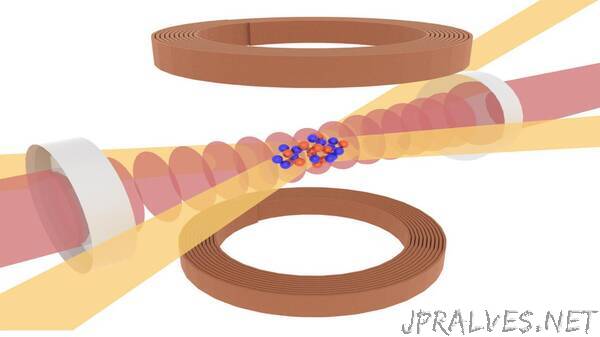
“EPFL scientists have coupled a new material with light at the level of a single photon. The achievement opens up prospects for better controlling and understanding the properties of quantum-correlated systems, where theoretical calculations are difficult.
There is a large group of materials that physicists refer to as “strongly correlated”, which include insulators and electronic materials that have unusual electronic and magnetic properties, or even neutrons in neutron stars. Their properties result from the fact that their constituents interact very strongly with each other: new features appear at the collective level, that are not present in isolated particles.
The unique properties of strongly correlated materials are often technologically useful, and are thus used in superconducting magnets and magnetic storage technology, but also in the emerging ‘quantum technologies’.
Now, scientists led by Jean-Philippe Brantut at EPFL’s Institute of Physics, have discovered the first complex, strongly correlated material whose constituents are strongly coupled to light at the single-photon level. The material is what the researchers call a “Fermi gas”, which is basically a gas of neutral atoms cooled down very close to absolute zero. There, atoms which belong to that same family of particles than electrons or neutrons display similar strong correlation effects.
By placing this Fermi gas between two highly reflective optical mirrors, a ‘box for light’, the researchers discovered that interactions with light can be made unprecedentedly strong. “We will now use this to better control and understand the properties of quantum correlated systems, where theoretical calculations are difficult,” says Brantut. “Conversely, this could allow to further use strongly correlated matter for quantum technologies applications, where interfacing with light is a prerequisite.””
